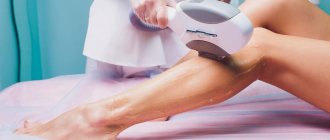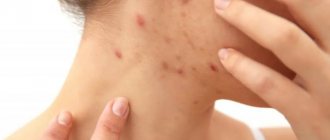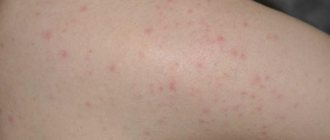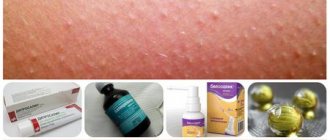Can smoking cause acne?
The effect of nicotine on the formation of acne on the surface of the face has been confirmed by multiple studies.
The connection between smoking and the formation of acne has long been identified. Nicotine affects the secretory function of the skin, clogging capillaries and changing the density of the sebaceous secretion, which helps block the sebaceous glands.
Against the background of skin hypoxia, tar settling on the skin of the face when exhaling, infection becomes easier; As a result, purulent acne develops.
Drinking plenty of fluids, which removes toxic elements, a more balanced diet, and frequent walks in the fresh air help to somewhat reduce the effect of nicotine on the skin.
The skin is always the first to react to numerous negative changes within the body. And in the situation with tobacco smoking, he also feels external influence.
How to get rid of acne quickly
Acne is a common skin problem, affecting about 85 percent of the population.
The skin is unable to remain healthy in such a situation. He “suffocates” from a lack of oxygen, micronutrients, and vitamins.
Ultimately, everything will result in the formation of acne. And as long as a person continues to smoke, dangerous disorders will occur inside the body in all layers of the skin.
Possible consequences
How can such a common situation be dangerous: you quit smoking and acne appears?
At first glance, nothing, but in fact the consequences can be very different:
- Infection - attempts to squeeze out a “pimple” often lead to the introduction of infection into the blood and cause infection of the entire body, and getting rid of boils or carbuncles that appear in place of a “harmless” pimple is much more difficult;
- Changes in appearance - purulent rashes, redness and uneven skin can ruin even an angelic appearance, what can we say about an ordinary, average person; such a cosmetic defect not only complicates relationships with others and reduces self-esteem, but can also cause serious psychological problems, exacerbating a depressive state former smoker.
The effect of nicotine on the skin
The provoking factors for the appearance of acne are blockage and inflammatory processes in the subcutaneous glands due to a failure of secretory functions, metabolism and structural damage to the epidermis. All of the above components of the etiological mechanism of the origin of various rashes and acne are caused by cigarette smoke.
Smoking has an adverse effect on the condition of facial skin.
This is manifested by the premature formation of wrinkles, especially in the lip area: by squeezing a cigarette or the mouthpiece of a hookah unit with one’s lips, a person contributes to the formation of persistent vertical wrinkles in the form of streaks above the upper lip. The nasolabial folds also begin to stand out sharply.
Dermatovenerologist, cosmetologist
Zhikhoreva Inna Viktorovna
6 years experience
First, nicotine and carbon monoxide in tobacco begin the process of binding hemoglobin in the blood, disrupting the transport of oxygen. As a result, tissue cells, including the skin, will experience severe hypoxia.
The dermis will begin to age prematurely, the secretory functions of the subcutaneous glands will be disrupted, and dry skin will form. Acne will be the result of these processes.
Also, the relationship between tobacco smoking and rash can manifest itself in an inflammatory reaction from the influence of toxic substances in tobacco smoke. The main damage from nicotine is aimed at the respiratory system and gastrointestinal tract.
However, some of the toxic substances will be excreted by the body through sweat, and these toxic components will directly become a provoking factor in inflammatory processes in the sebaceous glands during their clogging. Acne from smoking with purulent contents is characterized by a similar etiological mechanism.
Regular damage to the dermis of the face can also be caused by the direct influence of tobacco smoke from cigarettes. The skin of the face will be the first part of the body to come into contact with the exhaled smoke after a puff and rising from the cigarette.
The dermis dries out and becomes irritated all the time. Against this background, it will be natural for multiple comedones to appear, and with the addition of a secondary infection - acne and rashes with suppuration.
The influence of tobacco smoking on the formation of rashes on the face in adolescence will be especially strong. At this stage, hormonal changes disrupt metabolic processes and cause active formation of a rash.
Why can our articles be trusted?
We make health information clear, accessible and relevant.
- All articles are checked by practicing doctors.
- We take scientific literature and the latest research as a basis.
- We publish detailed articles that answer all questions.
In such conditions, smoking significantly aggravates the clinical picture: immunity decreases, blood supply and cell nutrition are disrupted.
On the surface of the face, formed pimples cannot heal on their own for a long period of time, since this is prevented by cigarette smoke, which has an irritating effect.
Skin problems faced by smokers
Every cigarette you smoke increases your risk of acne and other skin problems. When looking in the mirror, smokers may notice the following changes:
- Uneven tone. Since smoking can impair blood circulation, the skin does not receive enough oxygen and the nutrients it needs. Because of this, the face looks dull and its shade is uneven. Due to vasoconstriction and poor circulation, the skin of the face often turns yellow. At the same time, yellowing can also be observed on the fingers and nails.
- Expression wrinkles. People who smoke often squint to prevent tobacco smoke from getting into their eyes. Constant activity of facial muscles can lead to the formation of crow's feet and wrinkles in the area of the nasolabial fold.
- Skin ptosis. In smokers, the synthesis of collagen and elastin is disrupted, so the skin quickly loses its elasticity and firmness. Smoking causes the depth of wrinkles to increase and soft tissues to sag.
- Hyperpigmentation. Smokers' skin is more exposed to ultraviolet radiation. Therefore, due to a bad habit, age spots may appear.
- Pimples around the mouth (more common in women)68. Smokers often experience non-inflammatory acne. Tobacco smoke, settling on the face, clogs the pores, which leads to the formation of open and closed comedones. They may resolve on their own within a few days or develop into inflammatory acne on the face.
- Vascular network. Under the influence of nicotine, blood vessels narrow all the time, circulatory disorders occur, they do not receive the necessary nutrients, this leads to the appearance of a visible mesh on the face.
- Bruises under the eyes. Usually, blueness under the eyes is a consequence of improper functioning of the cardiovascular system or regular lack of sleep. Since smoking causes vasoconstriction, the heart has to function many times more. This leads to an increase in pressure, creating tension in the vascular walls, which can trigger the appearance of dark circles under the eyes.
Smoking also often causes problems such as dry skin. Oxygen starvation leads to rapid loss of moisture, which makes the first signs of aging more noticeable.
Features of acne from smoking
Cigarette smoke, which is released from the smokers' lungs, penetrates the skin of the face. It is impossible to exclude this, even if you exhale deeply all the time after tightening. Smoke contains resins and other elements that clog the pores of the skin, drying it out and causing irritation.
This causes clogging of pores, and then the appearance of acne. When a person has already had problems with their facial skin and a rash on it, the situation can get worse. Previously existing rashes do not heal for a long time, and the skin is not able to fully regenerate.
Together with smoke, a significant amount of chemical compounds enter the body that disrupt the functioning of the skin.
How to get rid of acne marks
Facial rashes are a common problem that almost every person faces.
Collagen, which provides the strength and elasticity of the skin, begins to break down. This affects the functioning of the subcutaneous glands and leads to clogging of their pores.
The concentration inside the body of vitamins A, C and E, which are not absorbed in the presence of many components from tobacco smoke, decreases.
This suggests that the skin loses its ability to counteract negative effects, as well as quickly recover from damage. Inflammation has the ability to spread to adjacent areas virtually without obstacles.
The narrowing of blood vessels as a result of the influence of tobacco smoke leads to a lack of nutrition for skin cells. All of the above circumstances provoke a deterioration in the aesthetic appearance of the dermis and disturbances in its functioning. This is often associated with the appearance of acne.
What not to do
If you don’t want acne to spread to new areas of the skin and turn into painful ulcers, you should follow a number of recommendations:
- do not squeeze pimples to avoid infection;
- wash your face with cool water and ice cubes - this will slow down the production of sebum;
- do not use hormonal ointments - they have a negative effect on the endocrine glands, liver and other organs.
https://www.youtube.com/watch?v=WItcC27vwiY
However, the most effective recommendation for both treatment and prevention of skin problems is simply don’t start smoking again. This is the only way you will allow your skin and the entire body to recover after prolonged exposure to nicotine and protect yourself from re-poisoning.
How to reduce harmful effects
Many people find it difficult to give up smoking because doctors believe that addiction in such a situation is similar to a drug addiction.
However, when a person persistently tries to overcome himself, but has not fully overcome such a habit, he can significantly reduce the harmful effects on the skin and the body as a whole.
To do this you need:
- drink at least 2 liters of drinking water throughout the day, it helps eliminate toxic components and has a beneficial effect on maintaining the functioning of internal organs;
- diversify the menu with vegetables and fruits that saturate the body with essential vitamins and minerals, and also contain fiber, which cleanses the gastrointestinal tract and is involved in eliminating harmful particles;
- spend more time on the street, the body needs to compensate for the lack of oxygen due to smoking;
- You need to take more careful care of your facial skin – cleanse, moisturize and nourish it.
Such instructions should be carried out constantly, in particular when acne has already appeared on the dermis.
How to restore beauty and health to your skin?
This is extremely difficult to do, especially if you have been smoking for a long time. To improve your skin, you will need to quit smoking, as well as a course of cosmetic procedures that can be recommended by an esthetician. If a rash occurs, you should contact a dermatologist. Acne around the mouth can have different causes, and they are not always related to smoking. A dermatologist will determine why acne appears and prescribe adequate treatment.
Thus, for mild to moderate acne, topical antibiotics can be prescribed18. This group of drugs includes Clindovit® gel. It contains the antibiotic lincosamide clindamycin, which is active against propionibacteria6. The drug helps reduce the level of free fatty acids6. To reduce the risk of developing antibiotic resistance, it is recommended to combine Clindovit® gel with benzoyl peroxide or Azelik®28 gel.
Acne after quitting smoking
However, the opposite situation often happens when a person quits smoking and pimples form on the skin. The flow of toxic substances into the body stopped, therefore, the general condition of the internal organs should have improved.
However, the appearance of a rash in such a situation indicates that toxic elements are removed from the internal organs. Part of the elimination function is taken over by the skin, and acne is evidence of this process.
After quitting smoking, a rash may appear due to the following provoking factors:
- Epithelial compensation. Tobacco smoke, which, penetrating deep into the body, causes vasoconstriction for approximately 1.5 hours. When the patient smokes cigarettes in the range of 1-1.5 hours, the process will proceed without stopping. After giving up this bad habit, due to the normalization of blood flow, the subcutaneous glands will begin to function intensively, which will cause clogging of their pathways.
- Hormonal changes. Quitting smoking is a kind of stressful situation for the body, which is adapting to unfamiliar operating conditions. This leads to hormonal disorders.
- Exacerbation of skin diseases of allergic origin. Likewise, it can also cause a rash on the skin. The body needs a certain period of time to cleanse itself of toxic substances.
This does not happen immediately, it takes about 2 to 6 months, taking into account how long the person has been smoking.
Strength of will
Relying only on willpower and your own endurance when trying to quit smoking is wrong. Failure in this case undermines self-confidence and makes subsequent attempts to quit smoking much more difficult. Trying to quit smoking through abstinence alone, a person is left without support, faces severe withdrawal symptoms, and increases the risk of returning to cigarettes. It is important to understand that smoking is not a bad habit that you can get rid of with willpower, but a disease. It requires special treatment: with medication support, psychotherapy, and lifestyle correction. Only with such treatment will a person be able to quit smoking forever, and not for a while.










